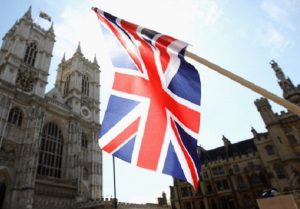Trump threatens 100% tariff on Brics nations if they try to replace dollar
4 min readUS President-elect Donald Trump has issued a stern warning to the BRICS nations, threatening to impose 100% tariffs on them if they attempt to create a rival currency to challenge the dominance of the US dollar. The BRICS bloc includes major global players like China and Russia, along with Brazil, India, South Africa, Iran, Egypt, Ethiopia, and the United Arab Emirates (UAE).
Trump’s threat, shared on social media, came in response to discussions within the BRICS group about reducing the US dollar’s dominance in global trade. Some leading politicians within the bloc have floated the idea of creating a new BRICS currency to facilitate trade among these nations and lessen reliance on the US dollar. However, internal divisions among BRICS countries have delayed any concrete plans for such a currency.
“The idea that the BRICS countries are trying to move away from the Dollar while we stand by and watch is OVER,” Trump wrote on his social media platform, Truth Social, on Saturday. He further warned that if the BRICS nations proceeded with plans to introduce an alternative currency, they would face severe consequences. “We require a commitment from these countries that they will neither create a new BRICS currency nor back any other currency to replace the mighty US dollar, or they will face 100% tariffs and should expect to say goodbye to selling into the wonderful US economy,” Trump stated.
The threat from Trump was made in the context of his broader stance on tariffs, which was a key feature of his presidential campaign. He has previously advocated for steep tariffs on foreign imports as a means of boosting the US economy, protecting American jobs, and raising government revenue. This latest warning about the BRICS nations underscores his hardline approach to trade negotiations, particularly with emerging economies.
The notion of a BRICS currency has been discussed among some of its member states, especially Russia and Brazil, who have expressed interest in reducing their dependence on the US dollar in international transactions. However, the plan has faced significant challenges, including disagreements within the group about the logistics and feasibility of such an initiative.
Trump’s remarks were immediately followed by suggestions from some of his allies that his comments could be part of his negotiating strategy. Republican Senator Ted Cruz, for instance, defended the proposed use of tariffs, emphasizing the importance of “leverage.” Speaking on CBS News’ Face the Nation, Cruz argued that the threat of tariffs had already forced action from other countries, citing how threats against Mexico and Canada led to significant changes in trade negotiations.
In a related move, Canadian Prime Minister Justin Trudeau made an unscheduled visit to Trump’s Mar-a-Lago estate in Florida. The visit appeared to be an attempt to address concerns over a potential 25% tariff on Canadian goods entering the United States. The visit hinted that other nations may also be seeking ways to avoid the imposition of tariffs on their products.
Trump’s pick for Treasury Secretary, Scott Bessent, has previously commented that the president-elect’s stance on tariffs is part of a broader strategy to negotiate favorable deals. Bessent has suggested that Trump’s approach to tariffs follows the principle of “escalate to de-escalate,” implying that the threats are a way to open negotiations, with the possibility of reversing them once terms are met.
Understanding Tariffs
A tariff is essentially a tax imposed on imported goods. The tax is proportional to the value of the product. For example, a $50,000 car imported to the US would face a 25% tariff, meaning an additional $12,500 would be charged. While Trump argues that tariffs will not harm US consumers, economists largely disagree. Although foreign companies export goods, the tariff is paid by the domestic businesses importing the goods, not the exporting companies.
Trump views tariffs as a tool for growing the US economy by protecting American industries and generating government revenue. However, studies have shown that in practice, the economic burden of tariffs often falls on US consumers, who face higher prices for imported goods. During his first term, Trump implemented numerous tariffs, many of which remain in place under President Joe Biden.
Conclusion
Trump’s latest threat to the BRICS nations highlights the ongoing tensions surrounding global trade and the role of the US dollar in international transactions. While the idea of a rival currency among the BRICS countries remains in its early stages and faces significant hurdles, Trump’s stance on tariffs signals that the US will not allow any challenge to the dollar without serious consequences. Whether this is a genuine threat or part of Trump’s broader negotiating tactics remains to be seen, but it underscores the complexity of trade relations in the modern global economy.








